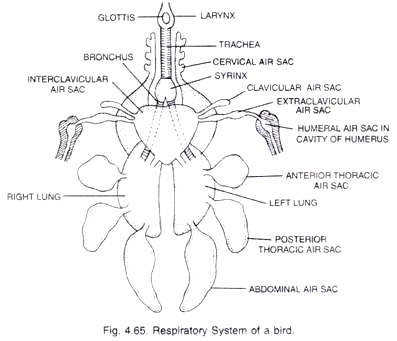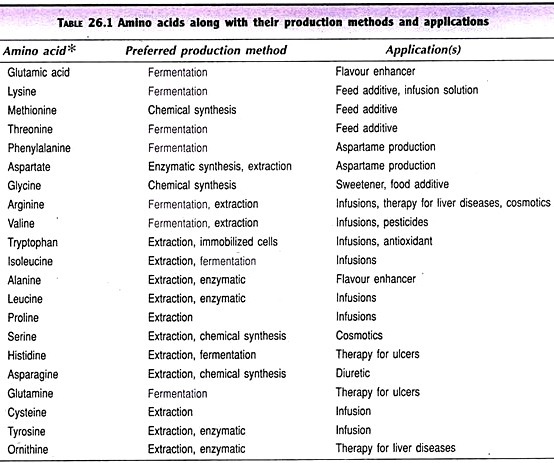In this article we will discuss about:- 1. General Characteristic of Class Aves 2. Flight Adaptations in Class Aves 3. Classifications.
General Characteristics of Class Aves:
Some of the general characters of class Aves the birds are listed below:
1. Birds are bipedal feathered and warm blooded (homoiothermous) animals i.e., they are able to maintain a constant body temperature. Their fore-limbs are modified into wings. Most of them can fly except flightless birds (e.g., Ostrich). Class Aves has about 9000 species.
2. The hind-limbs are adapted for perching, walking or swimming, etc., and usually bear four, sometimes three and rarely two toes.
3. Except uropygium gland (preen gland or oil gland), at the base of the tail, no skin gland is present. Ostrich and parrot lack oil gland.
4. The upper and lower jaws are modified into beak, which lacks teeth. Beaks are adapted to many ways of feeding; seed-crushing, fruit-scooping, flesh-tearing, nector-sip- ping, wood-chiselling and so on.
5. Legs are modified for walking, hopping, grasping, perching, wading and swimming. Legs bear homy epidermal scales.
6. The alimentary canal has additional chambers, the crop and gizzard. The crop stores and softens the food; however, the gizzard helps in crushing and churning the food. There is a cloacal aperture. Gall bladder is absent in some seed-eating birds (graminivorous) such as pigeons.
7. Respiration is by lungs. The lungs are spongy and inelastic. Air sacs are connected to lungs for supplement respiration. The larynx does not act as a voice box. Voice is produced by a special organ, the syrinx.
8. The heart is four-chambered. Sinus venosus is absent. Renal portal system is very much reduced. Red blood corpuscles are nucleated, oval and biconvex.
9. The kidneys are metanephric which drain the nitrogenous waste matter (chiefly uric acid) into cloaca through the ureters. Urinary bladder is absent except Rhea Americana (American Rhea— also called “South American Ostrich”. This is the only bird that has urinary bladder).
10. Brain is better developed than that of reptiles, of which cerebrum, cerebellum and optic lobes are quite large.
11. Birds have 12 pairs of cranial nerves.
12. Birds have a keen sense of sight but poor sense of smell but kiwi has good sense of smell. Pecten is present in the eyes of birds. Ear openings are present. Each ear consists of three parts: external, middle and internal.
13. Endoskeleton is fully ossified (bony) and the long bones are hollow with air cavities (pneumatic) to reduce weight. There is no bone marrow. The skull is monocondyllc, i.e., with one occipital condyle. Sternum with a median keel for the attachment of flight muscles.
14. Female has usually well developed single left ovary and oviduct. If right ovary and oviduct are present, they are vestigial (nonfunctional).
15. Many birds show sexual dimorphism. All birds are oviparous. Like reptiles birds lay cleidoic eggs which are macrolecithal and calcareous. Four embryonic membranes (e.g., chorion, amnion, allantois and yolk sac) are formed.
16. The birds are the most beautiful among the animals. They show courtship, nest building, parental care, migration and territorial behaviour.
Flight Adaptations in Class Aves:
1. Spindle-Shaped Body:
It is designed to offer minimum resistance to the wind.
2. Feathers:
They provide the passage for air and reduce friction to minimum. They also prevent loss of heat and help to maintain a constant temperature.
3. Wings:
Fore-limbs are modified into wings, which help during flight.
4. Beak:
Besides procurement of food, the beak is also used for nest-building.
5. Neck and Head:
Mobile neck and head are very useful for feeding, nest building, offence and defense.
6. Flight Muscles:
The flight muscles on the breast are greatly developed which help in flight.
7. Hind Limbs (Legs):
They are well suited for perching.
8. Endoskeleton:
Most of bones are pneumatic and filled with air instead of bone marrow. It makes the body light. Most of bones are firmly fused together, which help in flight.
9. Air Sacs:
These are attached to lungs which serve as reservoirs of air. They may also aid as cooling devices in regulation of the temperature of the body.
10. Warm-Bloodedness:
Birds are warm-blooded animals which is necessary for flight.
11. Circulatory System:
A large oxygen supply is required for rapid metabolism and warm-bloodedness. It is done by an efficient circulatory system.
12. Absence of Urinary Bladder:
Except Rhea, urinary bladder is absent in birds. Excreta are passed out at once. This helps in reducing the weight of the body.
13. Brain and Eyes:
Brain and eyes are well developed. Equilibrium is maintained by well developed cerebellum of the brain.
14. Single Ovary:
Presence of a single functional ovary on the left side in the female bird also leads to reduction of weight which is so essential for flight.
Classifications of Class Aves:
Class Aves is divided into two subclasses:
Subclass I. Archaeornithes:
Extinct, toothed beak, tail long lizard-like e.g., Archaeopteryx (Fig. 4.66).
Subclass II. Neornithes:
Modern as well as extinct birds, teeth absent, tail short, e.g., Struthio, Aptenodytes (Penguin), Ardea (Grey heron), AIcedo (Kingfisher), Anas (duck), Columba, Psittacula, Gallus, Tyto, Bubo (Great homed owl), Phonicopterus (Flamingo), Aquila (Eagle), Neophron (Vulture, Gidh), Milvus (Kite, Cheel), Pavo, Corvus (Crow), Passer domesticus (House sparrow
Gauriyya), Crane (‘Saras’), Cuckoo (Papiha), Eagle (Baz), wild goose (Hans), hawk (Basha), hornbill (Dhanesh), Partridge (Teetar), quail (‘Bater’), myna, swift (Babila), tailor-bird (Durzee), weaver-bird (Baya), wood pecker (Kathphorwa). Darwin Finches; Dodo was pigeon-like bird which became extinct during 17th century in Mauritius.
Darwin’s Finches:
A group of finches (birds) which live only on the Galapagos Islands except for one species which is also found on the Cocos Island. They are named after the naturalist Charles Darwin who visited the islands during his famous voyage on HMS Beagle (Ship) in 1835.
Each finch has a different shape of bill to suit its method of feeding. Darwin’s observations on these birds were an important influence in helping him to draw up his theory of evolution.
External Characters of a Typical Bird (Fig. 4.68):
Birds are bipedal feathered animals. Body is divisible into head, neck and trunk. The head has a beak, patch of fleshy skin, the cere, ear holes, nostrils and eyes, Neck may be small or long. The trunk is divisible into thorax and abdomen. In the thorax fore-limbs are modified into wings. The abdomen bears the hind- limbs which are long and stout bearing usually four or three and rarely two toes.
The toes have claws. All birds have scales on their legs. The abdomen possesses a cloacal aperture posteriorly. The uropygium (tail) is usually short. The uropygial gland (oil gland) is generally present on the dorsal surface of the tail.


